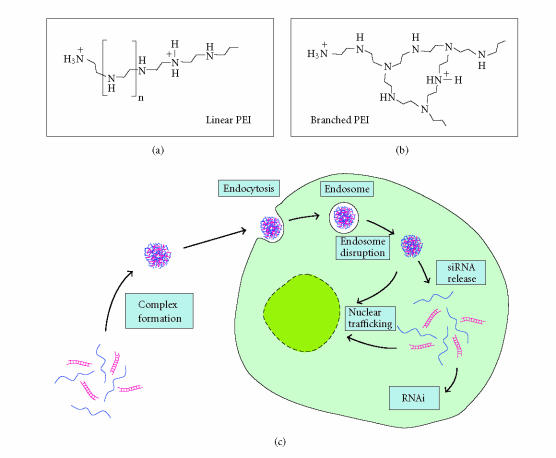Figure 2.
Polyethylenimine (PEI)-mediated siRNA transfer. Upper panel: PEIs are synthetic linear (a) or branched (b) polymers with an amino group in every third position. Dependent on the pH, some of these amino nitrogens are protonated giving PEI a high cationic charge density. Lower panel: proposed mechanism of PEI-mediated siRNA transfer. Due to electrostatic interactions, PEI is able to complex negatively charged siRNAs leading to a compaction and the formation of small colloidal particles which are endocytosed. The “proton sponge effect” exhibited by PEI complexes leads to osmotic swelling and ultimately to the disruption of the endosomes. siRNAs are protected from degradation due to their tight condensation in the complex and the buffering capacity of PEI. Upon their release from the PEI-based complex, intact siRNAs are incorporated into the RISC complex and induce RNAi (see Figure 1).

